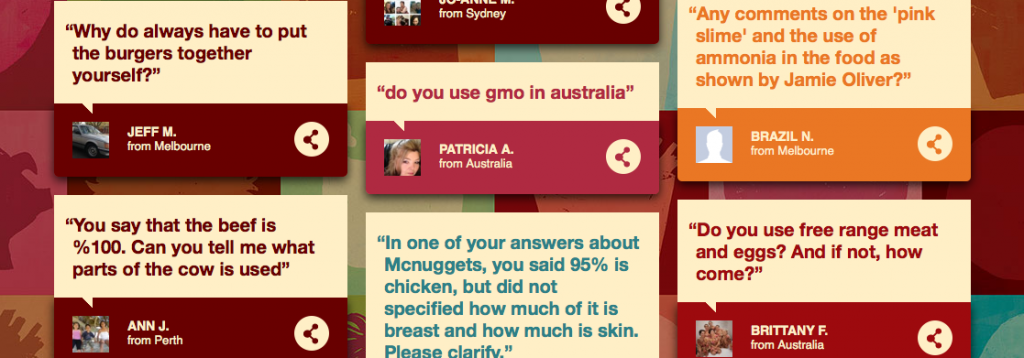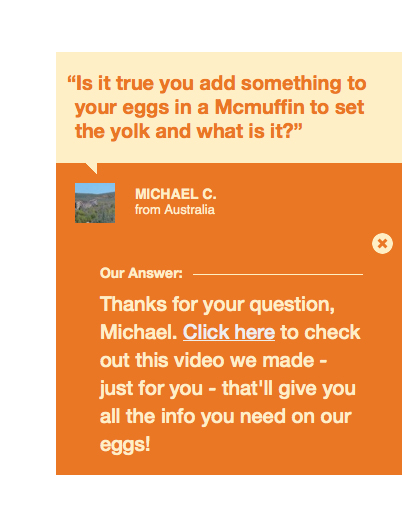Transparency. It’s what consumers have come to expect from the brands they buy, especially when it involves their food.
From the geographic origin of ingredients to how – and by whom – they are grown and harvested, consumers expect more from their loaf of bread than simply to serve as bookends for a sandwich. With the ease of accessing (and publishing) information online, conversations about these topics are happening, whether or not brands choose to partake in the discussion.
The following brands took the reigns and addressed the demand for transparency head-on by implementing transparency campaigns of their own.
McDonald’s Australia
Taking the initiative to proactively address customer questions, McDonald’s opened the door to dialogue with consumers about its menu items and ingredients, featuring an “Our Food. Your Questions.” page on the McDonald’s Australia site.

Through its transparency campaign (which also ran on its Canada website last year),  McDonald’s offered customers the opportunity to ask anything related to the brand and get an honest answer. From questions about favorite menu items to those with a more pointed tone, consumers submitted questions, and McDonald’s replied.
McDonald’s offered customers the opportunity to ask anything related to the brand and get an honest answer. From questions about favorite menu items to those with a more pointed tone, consumers submitted questions, and McDonald’s replied.
While diving into a transparency campaign can feel a bit like opening a can of worms, it can also be a great way to get involved in the conversations your audience is already having. McDonald’s took the opportunity to shed light on its ingredients, dispel myths, and involve itself in brand-related buzz – buzz that is going to occur with or without the brand’s involvement.
Chipotle
Promoting itself as a champion of transparency, Chipotle once again set out to differentiate itself from other food brands with its video “The Scarecrow” and interactive game, in which users were tasked with acting as the title character to foil the plans of the “evil Crow Foods.” With an emotional hook, Chipotle promoted awareness and prompted a conversation about food integrity, processing, and the food supply chain.
By tapping into the transparency trend, Chipotle received a widely favorable response to its message and, in alignment with its stated goal, educated its audience about its mission of promoting food with integrity.
From organizations calling for food supply transparency to companies like Whole Foods incorporating transparency as a primary element of their business model, consumer brands and consumers themselves are demanding transparency about the source, sustainability, and production of the foods they consume and feed to their families.
like Whole Foods incorporating transparency as a primary element of their business model, consumer brands and consumers themselves are demanding transparency about the source, sustainability, and production of the foods they consume and feed to their families.
For business-to-business brands, the trend toward transparency presents an opportunity to partner with food manufacturer clients with the resources necessary to educate consumers about sustainability, traceability, quality, and food safety, among other things. When a transparency campaign is approached with a plan and the resources to effectively partake in the conversation, it has the potential not only to position your brand on the proactive side of a food industry trend but also build a stronger bond with your audience.
If you’d like to learn more about the benefits of a transparency campaign for your brand, get in touch.

